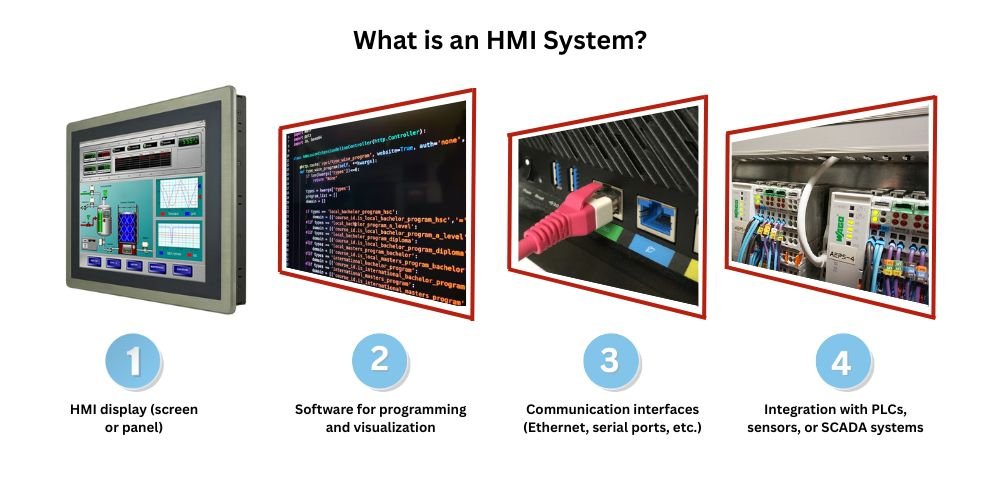Inside an HMI Screen: How It’s Made & What It's Made Of
An HMI screen may look like a simple touch display, but it’s built with precision engineering and layered technology to handle the demands of industrial environments. Understanding the internal layers of an HMI screen helps you appreciate why it’s so reliable, responsive, and durable. The manufacturing process of an HMI screen involves assembling multiple layers that work together to provide a clear display, responsive touch, and long-term durability. These screens are usually made in clean-room environments to prevent dust or contaminants from affecting performance. This is the outermost layer, often made of tempered glass or durable polycarbonate. It resists scratches, moisture, dust, and chemicals commonly found in industrial settings. Below the cover is the touch-sensitive layer, typically based on either resistive or capacitive technology. Some HMI screens have an air gap, while higher-end models use optical bonding, where adhesive is applied between the touch layer and the display. This reduces reflection, improves contrast, and enhances visibility in bright environments. This is the actual visual display unit—often an LCD (Liquid Crystal Display) or TFT (Thin-Film Transistor) screen that shows system data, alarms, and graphics. It determines the screen’s resolution, brightness, and viewing angle. Located behind the LCD, the LED backlight illuminates the display. It’s engineered to be energy-efficient and long-lasting, especially for 24/7 industrial use. This layer interprets input from the touch sensor and translates it into commands. It connects the screen to the main controller or HMI software, making the system interactive. The rear of the HMI screen includes EMI shielding, heat dissipation elements, and a durable metal or industrial plastic enclosure that protects internal electronics. Each layer of the HMI screen is chosen not just for functionality, but also for durability and safety: Industrial HMI screens are also tested to meet standards like IP65/IP66 for water and dust protection and IK ratings for impact resistance. Choosing the right type of HMI depends on your application. Here are the main categories: The next time you tap an HMI screen, remember—it’s more than just a glass surface. It’s a layered, engineered solution built for accuracy, durability, and real-time control in harsh conditions. Each layer works behind the scenes to ensure you get fast, reliable performance every time.Inside an HMI Screen: How It’s Made & What It's Made Of
How an HMI Screen Is Made
Layers of an HMI Screen
1. Protective Cover Layer (Top Layer)
2. Touch Layer (Touch Sensor)
Capacitive touch detects electrical properties of the human body for faster, multi-touch input3. Air Gap or Optical Bonding Layer
4. Display Layer (LCD/TFT Panel)
5. Backlight Layer
6. Controller Board / Touch IC
7. Rear Housing & Shielding
Durability Is Built Into Every Layer
Types of HMI Screens
1. Basic Text-Based HMIs
2. Graphical HMI Screens
3. Industrial PC-Based HMIs
Final Word

